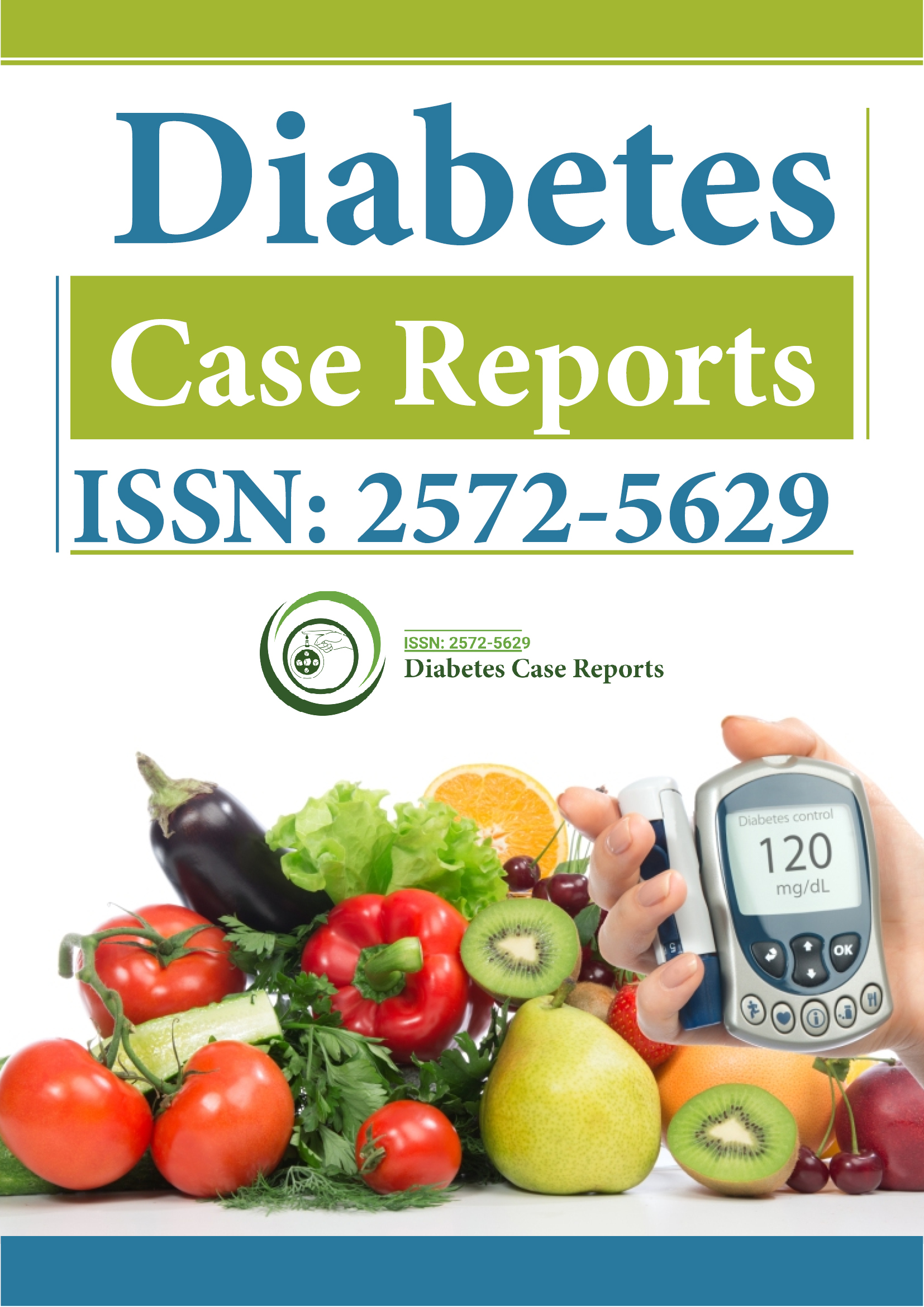Indexed In
- RefSeek
- Hamdard University
- EBSCO A-Z
- Euro Pub
- Google Scholar
Useful Links
Share This Page
Journal Flyer

Open Access Journals
- Agri and Aquaculture
- Biochemistry
- Bioinformatics & Systems Biology
- Business & Management
- Chemistry
- Clinical Sciences
- Engineering
- Food & Nutrition
- General Science
- Genetics & Molecular Biology
- Immunology & Microbiology
- Medical Sciences
- Neuroscience & Psychology
- Nursing & Health Care
- Pharmaceutical Sciences
Perspective - (2024) Volume 9, Issue 1
Optimizing Glycemic Control in Type 2 Diabetes with Insulin Degludec
Nicola Minzhi*Received: 02-Jan-2024, Manuscript No. DCRS-24-24860; Editor assigned: 05-Jan-2024, Pre QC No. DCRS-24-24860(PQ); Reviewed: 19-Jan-2024, QC No. DCRS-24-24860; Revised: 26-Jan-2024, Manuscript No. DCRS-24-24860(R); Published: 02-Feb-2024, DOI: 10.35841/2572-5629.24.9.200
Description
Insulin degludec is a long-acting type of insulin that is used to treat diabetes mellitus in adults and children. Insulin is a hormone that helps lower blood sugar levels by allowing cells to use glucose for energy. People with diabetes either do not produce enough insulin or cannot use it properly, leading to high blood sugar levels that can cause serious health problems. Insulin degludec works by replacing the insulin that is normally produced by the body and by providing a steady level of insulin throughout day and night. It helps to control blood sugar levels between meals and during sleep, and reduces the risk of low blood sugar (hypoglycemia). Insulin degludec is injected under the skin once daily, at any time of the day, and same time is chosen each day. The dose of insulin degludec is adjusted according to the individual's blood sugar levels, medical condition, and response to treatment. Insulin degludec is usually used in combination with a short-acting or rapid-acting insulin that is taken before meals to cover the rise in blood sugar after eating. Insulin degludec can also be used alone or with other oral or injectable medications for diabetes. It is important to follow the doctor's instructions to use insulin degludec, to monitor blood sugar levels, to adjust the dose, and how to manage any side effects or complications. The most common side effect of insulin degludec is low blood sugar, which can cause symptoms such as sweating, shaking, hunger, headache, dizziness, confusion, irritability, or weakness. Low blood sugar can be treated by eating or drinking something that contains sugar, such as glucose tablets, juice, candy, or milk. Severe low blood sugar can cause loss of consciousness, seizures, or death, and may require emergency medical attention or an injection of glucagon, a hormone that raises blood sugar levels. Other possible side effects of insulin degludec include weight gain, allergic reactions, injection site reactions, skin thickening or pits at the injection site, swelling of the hands or feet, and low potassium levels in the blood. Insulin degludec is a novel and effective option for people with diabetes who need long-acting insulin to control their blood sugar levels. It offers a flexible and convenient dosing schedule, a low risk of hypoglycemia, and a stable and consistent insulin action. Insulin degludec can improve the quality of life and the health outcomes of people with diabetes.
• The comparison of insulin degludec with other types of insulin, such as insulin glargine, insulin detemir, and insulin NPH, and the way they differ in terms of peak onset, duration, and variability of insulin action.
• The clinical trials and studies that have evaluated the safety and efficacy of insulin degludec in different populations and settings, such as type 1 and type 2 diabetes, children and adults, pregnant and breastfeeding women, and people with renal or hepatic impairment.
• The cost and availability of insulin degludec in different countries and regions, and how it is covered by insurance or subsidized by government programs.
• The patient education and support resources using insulin degludec, such as websites, apps, videos, brochures, newsletters, blogs, forums, and online communities, where they can find reliable and latest information, guidance, and advice on managing their diabetes and their insulin therapy.
Conclusion
Insulin degludec should not be used by people who are allergic to it or any of its ingredients, or who have low blood sugar at the time of injection. It should also not be mixed or diluted with any other insulin or solution or used in an insulin pump. Insulin degludec should be stored in a refrigerator or at room temperature, away from heat and light, and never freeze or expose to high temperatures. The pen device should be discarded after 56 days of use, even if it still contains some insulin. The tips and best practices for using insulin degludec, such as storage, handling, and dispose of the insulin and the pen device, injecting the insulin correctly and painlessly, to rotate the injection sites, and to prevent or treat any problems or complications.
Citation: Minzhi N (2024) Optimizing Glycemic Control in Type 2 Diabetes with Insulin Degludec. Diabetes Case Rep. 9:200.
Copyright: © 2024 Minzhi N. This is an open-access article distributed under the terms of the Creative Commons Attribution License, which permits unrestricted use, distribution, and reproduction in any medium, provided the original author and source are credited.
